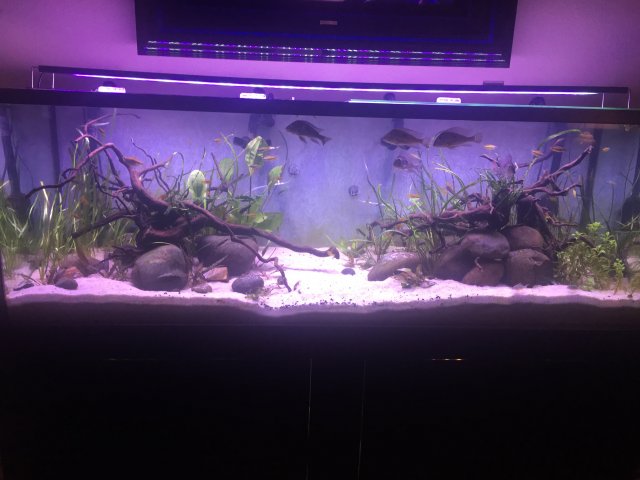I was considering adding some dried oak leaves and or catalpa leaves to release tannins in my tank.
But, was wondering if it would be beneficial in any way or would just be an aesthetic choice in this situation.
I also read this on Simply Fish that made me think twice.
"Leaf litter is a typical feature of the natural environment but not really recommended in aquaria because the feeding behaviour of Geophagus spp. tends to cause an excess of partially-decomposed material in suspension which not only looks unsightly but can block filter and pump mechanisms."
These are the fish in this tank:
geophagus sveni
phenacogrammus aurantiacus
hyphessobrycon pulchripinnis
brochis splendens
hypoptopoma gulare
otocinclus cocama
will be adding in next month:
pterophyllum altum
What do you think? Would the tannins be beneficial?
Here is my tank:

But, was wondering if it would be beneficial in any way or would just be an aesthetic choice in this situation.
I also read this on Simply Fish that made me think twice.
"Leaf litter is a typical feature of the natural environment but not really recommended in aquaria because the feeding behaviour of Geophagus spp. tends to cause an excess of partially-decomposed material in suspension which not only looks unsightly but can block filter and pump mechanisms."
These are the fish in this tank:
geophagus sveni
phenacogrammus aurantiacus
hyphessobrycon pulchripinnis
brochis splendens
hypoptopoma gulare
otocinclus cocama
will be adding in next month:
pterophyllum altum
What do you think? Would the tannins be beneficial?
Here is my tank:









